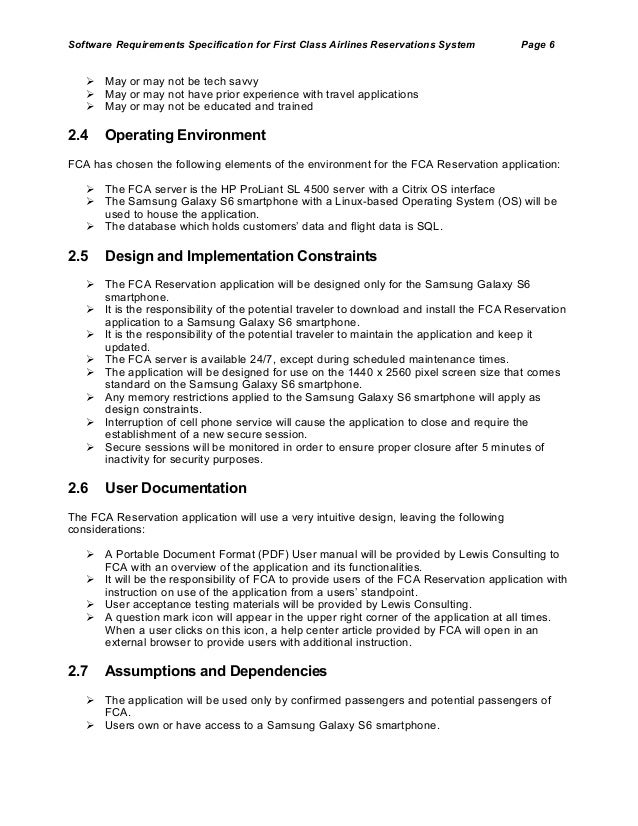Software Requirements Pdf Karl Wiegers Requirements
This article includes a, but its sources remain unclear because it has insufficient. Please help to this article by more precise citations. (May 2012) In and, a functional requirement defines a function of a or its component. A function is described as a set of inputs, the behavior, and outputs.
Functional requirements may be calculations, technical details, data manipulation and processing and other specific functionality that define what a system is supposed to accomplish. Behavioral requirements describing all the cases where the system uses the functional requirements are captured in.
Functional requirements are supported by (also known as quality requirements), which impose constraints on the design or implementation (such as performance requirements, security, or reliability). Generally, functional requirements are expressed in the form 'system must do ', while non-functional requirements are 'system shall be '. The plan for implementing functional requirements is detailed in the system design.
The plan for implementing non-functional requirements is detailed in the system architecture. As defined in, functional requirements specify particular results of a system. This should be contrasted with non-functional requirements which specify overall characteristics such as cost and. Functional requirements drive the application architecture of a system, while non-functional requirements drive the technical architecture of a system. In some cases a requirements analyst generates use cases after gathering and validating a set of functional requirements.
The hierarchy of functional requirements is: user/ request → feature → use case → business rule. Each use case illustrates behavioral scenarios through one or more functional requirements. Often, though, an analyst will begin by eliciting a set of use cases, from which the analyst can derive the functional requirements that must be implemented to allow a user to perform each use case. Contents. Process A typical functional requirement will contain a unique name and number, a brief summary, and a rationale. This information is used to help the reader understand why the requirement is needed, and to track the requirement through the development of the system.
The crux of the requirement is the description of the required behavior, which must be clear and readable. The described behavior may come from organizational or business rules, or it may be discovered through elicitation sessions with users, stakeholders, and other experts within the organization.

Many requirements may be uncovered during the use case development. When this happens, the requirements analyst may create a placeholder requirement with a name and summary, and research the details later, to be filled in when they are better known. See also. 'Supplement 4-A, A Procedure for Requirements Analysis'. United States Government US Army.
Karl E Wiegers
Archived from (PDF) on 31 January 2017. Retrieved 18 March 2016. Roman, G.-C. (1985) 'A taxonomy of current issues in requirements engineering' Computer, April 1985 Volume: 18 Issue: 4, pp. 14–23,. Yeh (1982) 'Requirements Analysis- A Management Perspective,' Proc. COMPSAC '82, Nov.
1982, pp. 410–416. Books. Wiegers, Karl E. Redmond: Microsoft Press. Stellman, Andrew; Greene, Jennifer (2005). Cambridge, MA: O'Reilly Media.